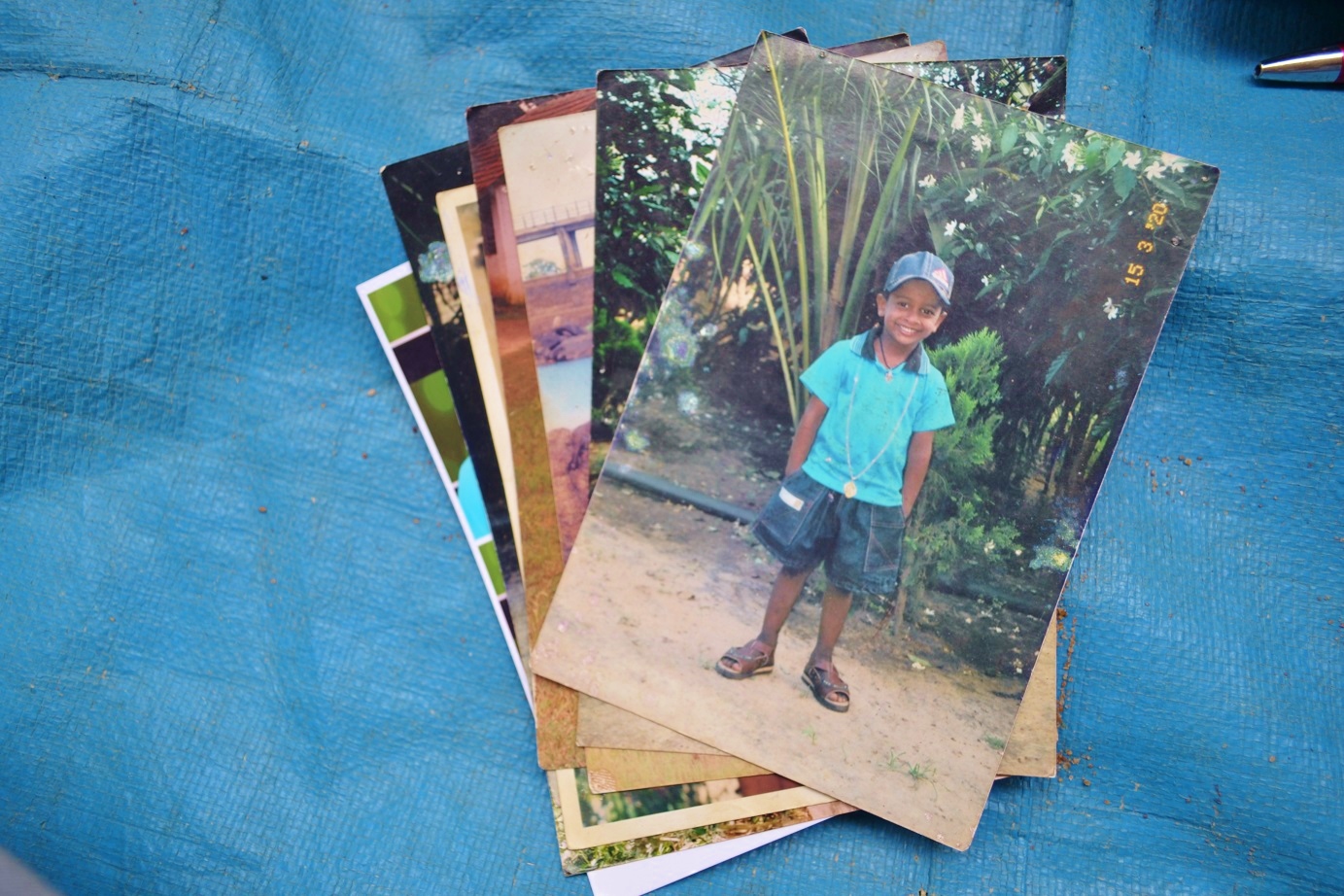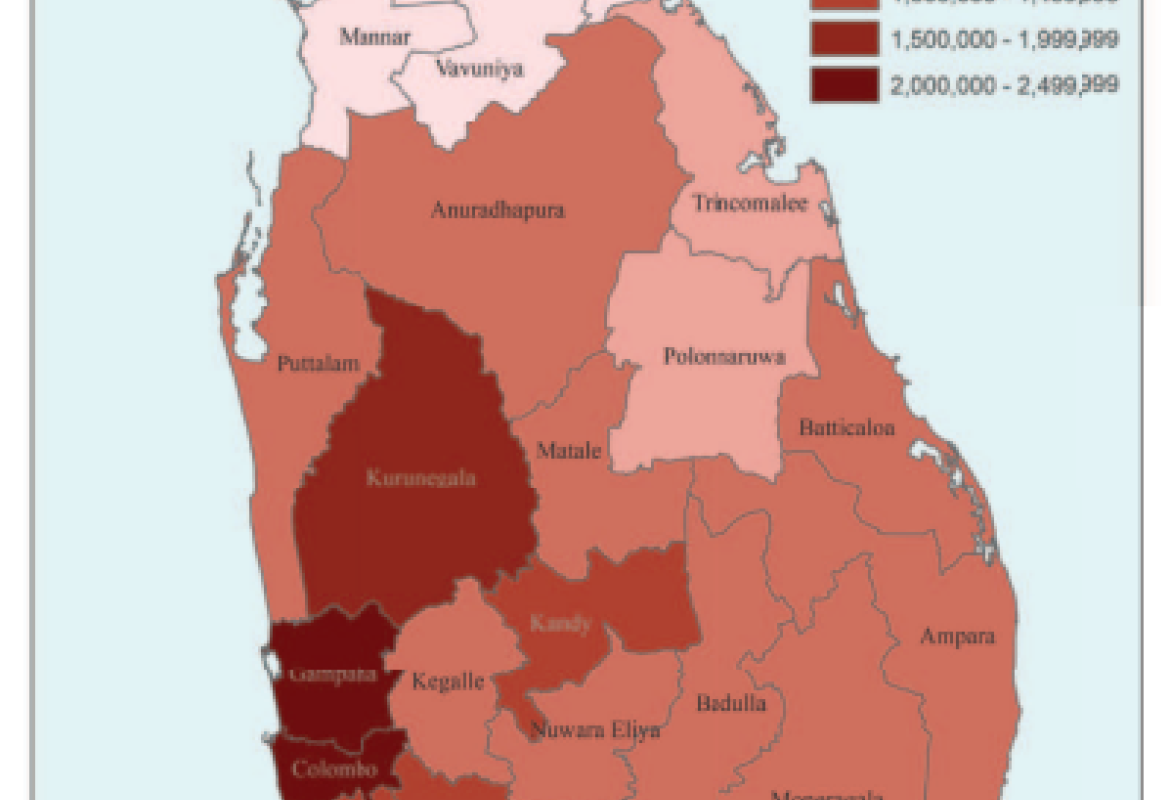
“The Americans, the Indians, the United Nations all told us to surrender our children,” says Kandasamy Ponamma. “Now they have all let us go.” Sat on a tarpaulin sheet in the sweltering heat outside a temple in Kilinochchi, she lays out meticulously kept photographs of her family.
Her daughter Kirishnakumari, son-in-law Nadesu and their two young children Sarujan and Abitha were all last seen on the 18th of May 2009. Nadesu, a member of the LTTE, had surrendered alongside hundreds of others members and their families to the Sri Lankan military. The whole family, including 5-year-old Sarujan and 2-year-old Abitha, were forced on board a Sri Lankan military bus.
